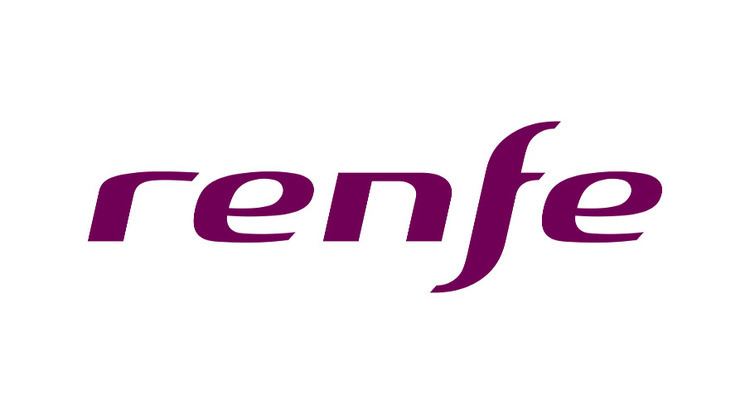Type State-owned company Number of employees 13,954 (2011) Founder Government of Spain | Industry Rail transport Headquarters Madrid, Spain Founded 1 January 2005 Revenue 2.014 billion EUR (2013) | |
 | ||
Key people Julio Gómez-Pomar Rodríguez (CEO),
Enrique Peña Pérez,
Manuel Fresno Castro,
José Luis Marroquín Products Rail transport, Freight Owner Government of Spain (100%) Profiles | ||
The moment of impact terrifying cctv of spain train crash near santiago de compostela
Renfe Operadora ([ˈreɱfe opeɾaˈðoɾa]) is the state-owned company which operates freight and passenger trains on the 1,668 mm (5 ft 5 21⁄32 in) Iberian gauge, the 1,435 mm (4 ft 8 1⁄2 in) standard gauge and the 1,000 mm (3 ft 3 3⁄8 in) metre gauge networks of the Spanish national railway infrastructure company ADIF (Administrador de Infraestructuras Ferroviarias—Railway Infrastructure Administration).
Contents
- The moment of impact terrifying cctv of spain train crash near santiago de compostela
- History
- Structure
- Operations
- Passenger rolling stock
- Class numbers
- References
History
The name "Renfe" is derived from that of the former Spanish National Railway Network, RENFE (acronym of Red Nacional de los Ferrocarriles Españoles—National Network of Spanish Railways) created on 24 January 1941 with the nationalisation of Spain's railways. As per EU Directive 91/440, RENFE was divided into Renfe-Operadora (operations) and ADIF (infrastructure) on 1 January 2005. At the same time, the existing RENFE double-arrowed logo (nicknamed the "galleta", Spanish for biscuit), first introduced in 1971 and given a facelift in 1983, with a sans-serif font, and again in 2000, with a mixed-case italic font, has been replaced by a dark purple lower-case wordmark designed by Interbrand, and also replaces some of the separate logos used by the other sectors, although the old RENFE logo remains in use in some stations in Spain and on maps to indicate an ADIF station.
The Railway Sector Act, 2003 separated the management, maintenance and construction of rail infrastructure from train operation. The first activity is now the responsibility of Administrador de Infraestructuras Ferroviarias (ADIF), the legal successor of RENFE, while the newly created Renfe-Operadora (commercial name "Renfe Operadora" or simply "Renfe") owns the rolling stock and remains responsible for the planning, marketing and operation of passenger and freight services (though no longer with a legal monopoly).
Renfe Operadora inherited the management model of the business units of the old RENFE, which made Renfe Operadora responsible for the operation of the following passenger and freight services. In January 2006, Renfe Operadora restructured the main business units into four:
The Spanish State railways are currently engaged in a major transformation and modernisation project. Key to this effort is a major overhaul of their out-dated ICT (information and communication technology) systems through an ICT renewal project scheduled for completion at the end of 2010 under the responsibility of Corporate Director of Information Systems Óscar Gómez Barbero. So far, the company has introduced improvements to their internet ticket sales and adopted new ICT management practices within a "more industrial" organisational model, though Mr. Gomez has publicly acknowledged the difficulties in transforming what still remains a very hierarchical organisation.
Structure
In June 2013, Renfe's board agreed to restructure the organisation into four separate companies, responsible for:
These four would be underneath a single holding company.
Operations
The company operates some 12,000 km (7,500 mi) of railways, 7,000 km (4,300 mi) of them electrified. Most of the tracks are constructed to the broad "Iberian gauge" of 1,668 mm (5 ft 5 21⁄32 in), the same as that used in Portugal but wider than the international gauge of 1,435 mm (4 ft 8 1⁄2 in) which is standard in neighbouring France, most of western and central Europe, and most of the rest of the world. The newer high-speed (AVE) network has been built to the international standard gauge of 1,435 mm in anticipation of its eventual connection to the rest of the European railway system. For this reason, the 1,435 mm gauge is generally termed "European gauge" in Spain.
The Spanish high-speed system is called AVE (Alta Velocidad Española, meaning "Spanish High Speed"). The logo incorporates a feature which resembles a bird (ave in Spanish). The high-speed lines are built to the standard European gauge (1,435 mm or 4 ft 8 1⁄2 in).
Construction of the high-speed rail line between Madrid and Seville began in 1988 and operation commenced in 1991. Train speed on the Seville line is 300 km/h (190 mph). The second high-speed rail line (Madrid to Barcelona) was completed in 2007 with the inaugural service commencing at 06:00 on 20 February 2008. The operational speed on this route is 350 km/h (220 mph). The greater part of the line (Madrid to Lleida) was placed into service on 11 October 2003, with connection to Huesca from Zaragoza. The third high-speed line (Madrid to Toledo) was opened in November 2005, followed by the spur from Córdoba to Málaga as far as Antequera in 2007. Another high-speed route from Madrid to Valladolid was opened in 2007, the line from Madrid to Valencia was opened in 2010 and the first stage of the high-speed line in Galicia opened in 2011. A line to Lisbon is being designed.
Other lines operated by Renfe include Euromed, a moderate-speed line between Barcelona and Valencia.
In addition to intercity transport, Renfe operates commuter train systems, known as Cercanías (or Rodalies in Catalonia and Cercanías-Aldirikoak in the Basque Country), in eleven metropolitan areas, including Madrid and Barcelona. In some cities, Renfe shares the market with other commuter railway operators, such as FGC in Barcelona.
Passenger rolling stock
Renfe Operadora utilises the following rolling stock and commercial products inside of its two divisions:
Class numbers
All classes are designated by three numbers. The first digit has a special meaning:
